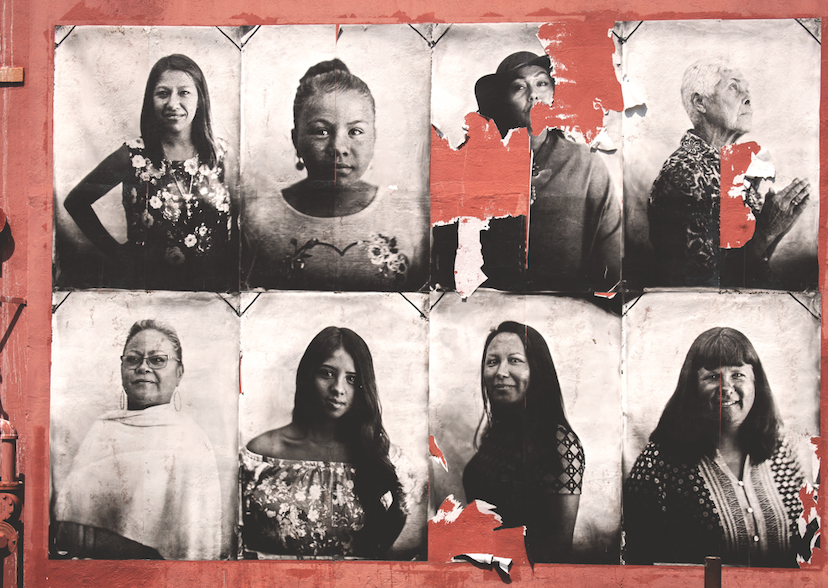Content Strategy
How to Shape a Multicultural Marketing Strategy
By Jonathan Crowl on January 15, 2019
Building relationships with customers on a local level is one challenge. But as businesses expand into new regions, countries, and cultures, they find themselves crossing important boundaries that affect how their messaging is received by their target audience. Whether you're reaching out to business professionals in Singapore or Mexican-American soccer fans in Houston, the rules of engagement are the same: To make a positive brand impact, you need to create messaging specifically for targeted communities.
That messaging is the result of a well-conceived multicultural marketing strategy, and it's not as simple as repackaging existing content or translating a message into a different language. True multicultural marketing cultivates brand awareness and loyalty through an authentic approach to speaking directly to those consumers.
That's not to say your existing messaging can't ever be delivered to a multicultural audience. But if your company is serious about reaching new markets and diversifying its consumer base, it has to connect with those consumers on their own level. Yes, translation may be part of that, but a new language alone is superficial in terms of building and deepening connections.
Brands need to understand the desires and interests of their multicultural audience, as well as the pain points they experience and the brand's ability to address them. And they have to understand that no group is monolithic: African Americans may be a minority group your brand is trying to better engage, but such a broad label overlooks other aspects of diversity, including age, religion, gender identity, location, sexual orientation, income, education, and other criteria that further divide these groups. Effective messaging for multicultural audiences has to recognize these differences, use this criteria to better define their target audience, and craft content that speaks directly to these groups.
Customers want to see a brand that conforms itself to fit their world, not the other way around. And, ultimately, they want to see their lives reflected by a brand. To understand the right way to approach a multicultural marketing strategy, it's worth looking at some notable multicultural marketing examples.
Beyond Diversity: Engagement Through Inclusion
When it comes to reaching new audiences in untapped markets, one of the biggest challenges is creating messaging that resonates. Businesses reaching into new regions often have limited familiarity with the people and cultures they're attempting to engage.
Each market presents its own challenges; the marketing strategies that worked in one region may have no relation to a company's success in other parts of the world. Perhaps the only thing worse than copy-and-pasting your messaging from one culture to the next is creating a new marketing message that leans on stereotypes or limited understanding of the communities you're trying to reach.
This can be a paradox for most brands: How do you learn more about a segment of your audience when you aren't able to get your foot in the door for a conversation? The answer is often found by looking inward at the teams tasked with engaging these communities. According to a panel of experts brought together by WHOSAY, a lack of diversity on decision-making teams can often stunt a brand's ability to craft authentic, effective messaging.
Diversity, those experts argue, is only part of the recipe to building an effective multicultural marketing strategy. Diversity simply means representing a variety of people and cultures in your marketing and advertising, and adjusting your hiring practices to represent a broader body of employees. Inclusion is more challenging, but it offers the best rewards. Instead of making sure cultures and people are represented on your marketing team and in the content you create, underrepresented voices must be elevated to decision-making positions where they can impact the creation of messaging and tone, influencing campaign development from the very first step.
When diverse voices are left out of the planning meeting, it doesn't matter how many Latino actors you hire to star in your beer commercial: The messaging can still be exposed as a false front, and your beer brand's half-hearted efforts to engage a multicultural audience can do more harm than good. It can also offend your audience by oversimplifying its definition, and therefore its messaging, to diverse groups: While younger LGBTQ residents of San Francisco may have a broad identity in common with older LQBTQ residents of a Midwestern city like Omaha, their life experiences are different, as are the communities in which they grew up. When content homogenizes this experience instead of allowing room for these differences to exist, it distorts the narratives of some of these consumers and can alienate members of its target audience.
P&G has recognized the importance of representative marketing teams, and it has prioritized in-house inclusivity with a metrics-heavy approach to reaching targeted communities and cultural groups. As WARC reports, the company has also put increased pressure on production partners and affiliated agencies to implement similar inclusive team-building practices, all in hopes of making sure the company is crafting effective multicultural messaging.
One of the best multicultural marketing examples comes from P&G, which consistently ranks among the top brands in terms of targeting and connecting with minority communities in the United States. One executive for P&G told WARC that the company's goal is to create messaging that understands multicultural consumers and successfully reaches at least 90 percent of every cultural group the company targets. By setting high standards and using this performance as a measuring stick, the company can push its marketing strategy to keep uncovering new methods of building genuine customer relationships.
Crafting an Authentic Brand Message
Once you have a diverse team in place to oversee the creation of a multicultural marketing strategy-and keep in mind, different teams may need to be assembled to better serve individual communities-those teams need to create a template for developing messaging that engages this new audience. This can be done in-house or through a partner agency, or a combination of the two: As AdAge reports, BMW felt it was important to work with an outside team to leverage external perspective and experience when targeting African-American, Latino, and Asian consumers in the United States.
Image attribution: Tim Mossholder
Then, instead of trying to force existing campaigns and messaging to fit new communities, multicultural campaigns should start from the ground up: Identify pain points and consider meaningful ways a product can be promoted.
In some cases, you might be able to translate existing content over to a new community, but this should only happen after the focus of the messaging has been built from scratch to serve the cultural group in question.
The Importance of Data in Understanding the Impact of Your Decisions
Remember that analytics can always help you assess the efficacy of your campaign-including what's working and what needs to be re-evaluated. These analytics can also help brands push past monolithic views of cultural groups to segment and analyze them according to different criteria. Suppose, for example, you're trying to market a line of household products to Asian American consumers. On the macro view, your campaign performance among this group is driving positive ROI, suggesting some degree of success. But when you segment further, you find that your success in engaging second-generation Asian Americans is being dragged down significantly by poor performance among Asian immigrants.
Furthermore, you notice that while performance among young, urban Asian Americans is off the charts, your brand is making virtually no impression on older, rural Asian Americans, despite your efforts to target them. This is cause for alarm that should prompt a review of your current approach: Why are some communities buying in while others are virtually untouched? Should you change your approach to rural and older Asian Americans, as well as immigrants versus native-born citizens, or do you lean in to the young, urban, native-born Asian Americans as your core consumer group? There will be choices for every brand to make, but it all starts with more granular insights and a more nuanced approach to defining your audiences.
The important thing is creating marketing assets that reflect the lives of your consumers. If you're selling a product that aims to be central to your target consumer's home life-a digital home assistant, for example-then the home setting that features this content needs to reflect the home life of the cultural group you're targeting. This is why it's sometimes necessary to create custom versions of the same content to serve diverse communities; major tech brands like Amazon and Google want their in-home assistants to be purchased by every household in the world. But to drive home the message of the value these products offer to those homes, the content promoting these products needs to reflect the diversity of homes a digital assistant is able to serve.
For communities that feel overlooked by more dominant marketing trends, brands that have mastered multicultural marketing often feel like a breath of fresh air. Their sensitivity makes them stand out among a crowd of brands that haven't taken the time to understand their customers. If you're serious about reaching new markets and building relationships with ignored consumers, investments into better multicultural marketing can pay enormous dividends.
For more stories like this, subscribe to the Content Standard newsletter.
Featured image attribution: Cortney White


